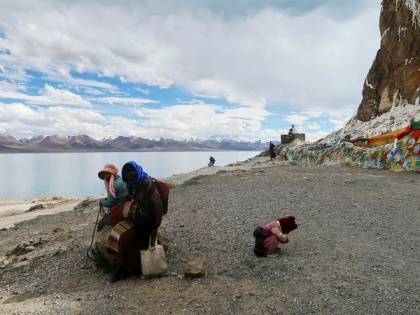Concerns raised regarding environmental impact of Lianghekou hydro-photovoltaic power station
By ANI | Published: July 1, 2023 06:43 AM2023-07-01T06:43:33+5:302023-07-01T06:45:03+5:30
Lhasa [Tibet], July 1 : Concerns have been raised regarding the potential environmental impact of the Lianghekou hydro-photovoltaic power ...

Concerns raised regarding environmental impact of Lianghekou hydro-photovoltaic power station
Lhasa [Tibet], July 1 : Concerns have been raised regarding the potential environmental impact of the Lianghekou hydro-photovoltaic power station, hailed as the world's largest and highest-altitude hydro-PV complementary power station, according to Tibet Rights Collective.
The Lianghekou hydro-photovoltaic (PV) complementary power station in Ganzi commenced operations on Sunday.
As per Tibet Rights Collective, the Yalong River basin where the Lianghekou hydropower plant is situated is renowned as one of Tibet's clean energy bases. The introduction of such a massive power station in this ecologically fragile area raises concerns about potential disruptions to the local flora and fauna, including aquatic life.
The power stations' long-term effects on water resources remain uncertain. Such projects rely heavily on water flow for both hydropower and cooling purposes. This diversion of water could impact downstream communities that rely on the Yalong River for agricultural and domestic needs.
There is a need to look at this development with caution as Tibet's environment is exploited by the Communist Party of China (CCP) to meet its ends. The Tibetan plateau is often known as the "Third Pole", and holds the third-largest store of water ice in the world.
Its glaciers feed several of the world's largest rivers, rivers that over 1.5 billion people throughout south and southeast Asia depend on every day for their water supply. Yet Tibet is warming three times faster than the rest of the earth, losing an estimated eight billion tonnes of ice being lost every year as glaciers disappeared.
As per Tibet Rights Collective, this comes in the wake of recent news that according to an order issued by the authorities in Lingya Village in Rebgong (Tongren) county in Qinghai, Tibetan farmers in seven villages must vacate their land within 10 days of the date the order was issued, May 23. The villages fall in the project site for the construction of a hydropower dam.
It appears that compensation for the villagers is not mentioned in the order. Defiance or failure to comply with "development" orders might result in long imprisonment terms, as evident in the imprisonment of ten Tibetans in the Sangchu county in Kansu (Gansu) Tibetan Autonomous Prefecture in mid-2020.
The purportedly "green" policy that China is pursuing in Tibet has been of building a number of dams on the plateau, to reduce the country's dependence on coal. However, the cost of the CCP's megaprojects is being paid by the local Tibetans, in the form of disruption of their habitats as well as dislocation of people.
Disclaimer: This post has been auto-published from an agency feed without any modifications to the text and has not been reviewed by an editor
Open in app